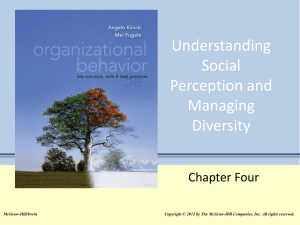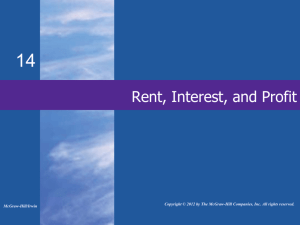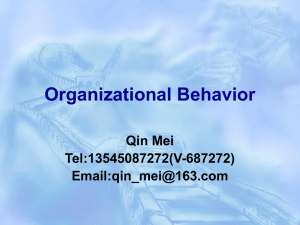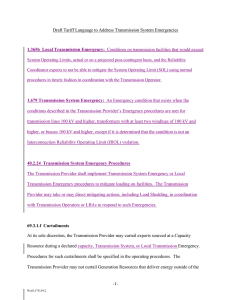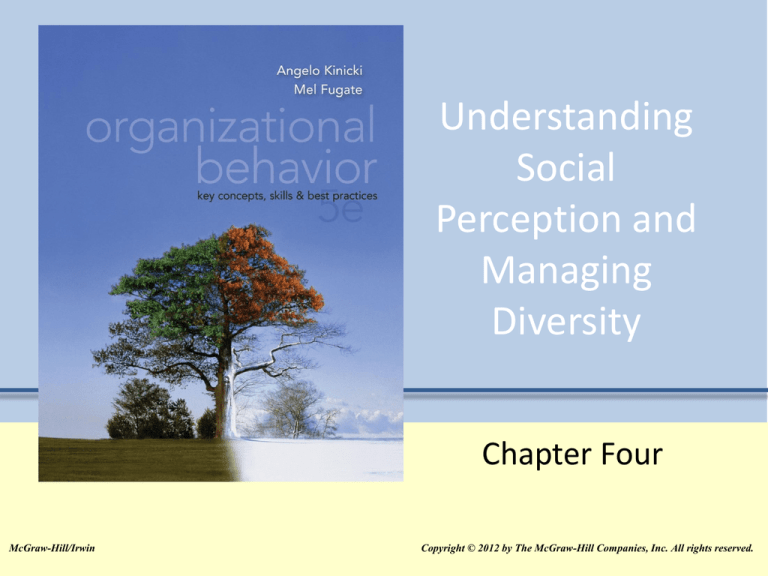
Understanding
Social
Perception and
Managing
Diversity
Chapter Four
McGraw-Hill/Irwin
© 2012 The McGraw-Hill Companies, Inc. All rights reserved.
Copyright © 2012 by The McGraw-Hill Companies, Inc. All rights reserved.
After reading the material in this chapter,
you should be able to:
LO4.1 Describe perception in terms of the
social information processing model.
LO4.2 Explain seven managerial implications
of social perception.
LO4.3 Explain, according to Kelley’s model,
how external and internal causal
attributions are formulated.
4-2
After reading the material in this chapter,
you should be able to:
LO4.4 Demonstrate your familiarity with the
demographic trends that are creating an
increasingly diverse workforce.
LO4.5 Identify the barriers and challenges to
managing diversity.
LO4.6 Discuss organizational practices used to
manage diversity
4-3
A Social Information Processing
Model of Perception
Perception
cognitive process that
enables us to
interpret and
understand our
surroundings
4-4
Social Perception: A Social
Information Processing Model
4-5
Commonly Found Perceptual Errors
Table 4-1
4-6
Performance Charts
4-7
Attributional Tendencies
Fundamental attribution bias
Reflects one’s tendency to attribute another
person’s behavior to his or her personal
characteristics, as opposed to situational
factors.
Self-serving bias
Represents one’s tendency to take more
personal responsibility for success than for
failure.
4-8
Defining and Managing Diversity
Diversity
represents the multitude of individual
differences and similarities that exist among
people
4-9
Four Layers of Diversity
4-10
Increasing Diversity in the Workforce:
Demographic Trends
1. Women navigate a labyrinth after breaking
the glass ceiling
2. Racial groups are encountering a glass
ceiling and perceived discrimination
3. Mismatch between workers’ educational
attainment and occupational requirements
4. Generational differences in an aging
workforce
4-11
Increasing Diversity in the
Workforce
Glass ceiling
represents an
absolute barrier or
solid roadblock that
prevented women
from advancing to
higher level
positions.
4-12
Generational Differences
Table 4-2
4-13
Barriers and Challenges to
Managing Diversity
1.
2.
3.
4.
Inaccurate stereotypes and prejudice
Ethnocentrism
Poor career planning
An unsupportive and hostile working
environment for diverse employees
5. Lack of political savvy on the part of
diverse employees
4-14
Barriers and Challenges to
Managing Diversity
6. Difficulty in balancing career and family
issues
7. Fears of reverse discrimination
8. Diversity is not seen as an organizational
priority
9. The need to revamp the organization’s
performance appraisal and reward system
10. Resistance to change
4-15

